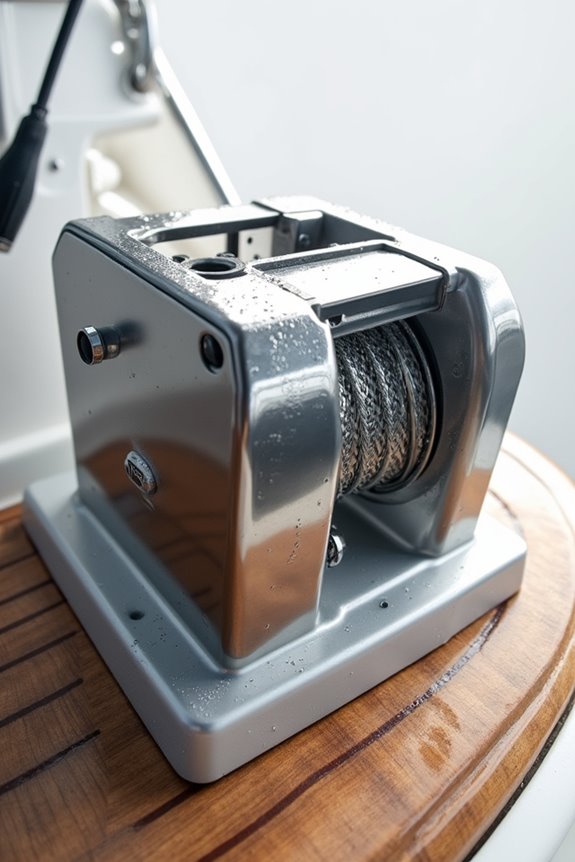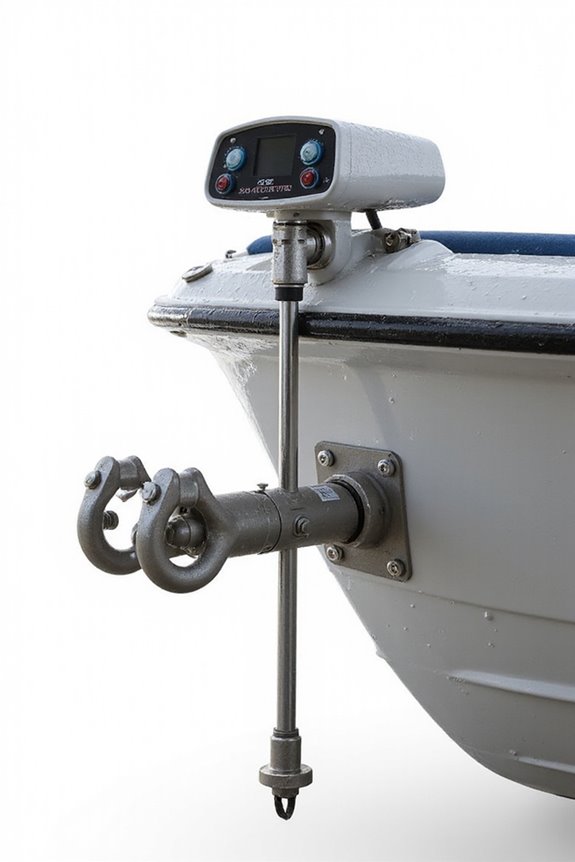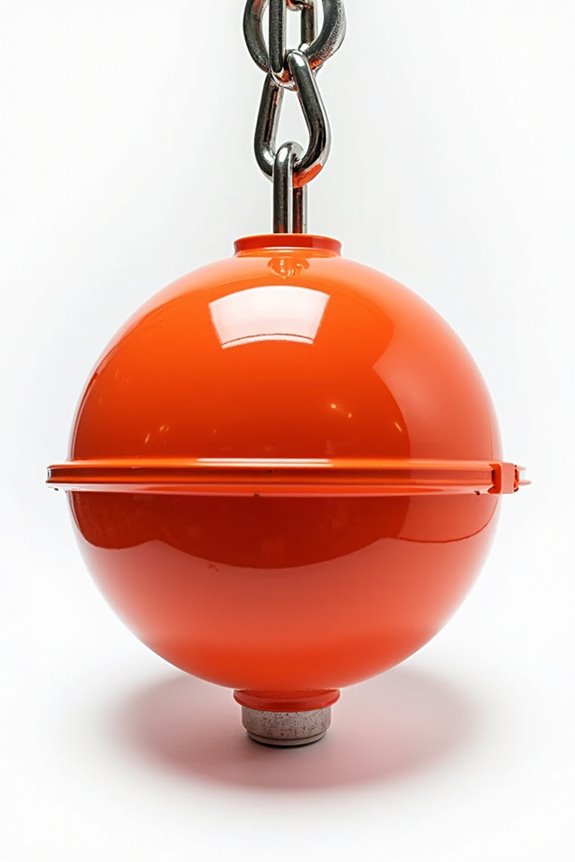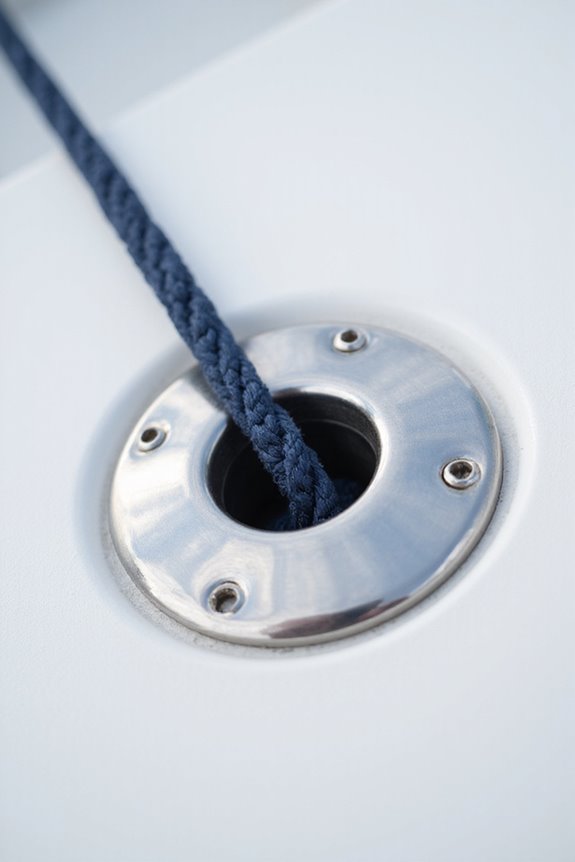We all know winch handles come in different sizes—longer ones give you more power but spin slower; shorter handles boost speed but need more muscle. Materials matter too: carbon fiber is stiff and light, while aluminum resists corrosion nicely. Locking systems keep handles from flying overboard, and proper grips ease wrist strain. Matching handles with your winch brand isn’t always straightforward, and pairing them with self-tailing systems means smoother, hands-free control. Want to boost your sailing game? Keep going.
Key Takeaways
- Winch handles leverage mechanical advantage through length, balancing power and speed for effective rope tensioning in sailing.
- Materials like carbon fiber and anodized aluminum ensure lightweight durability and corrosion resistance in winch handles.
- Locking mechanisms, such as OneTouch systems, secure winch handles to prevent loss and allow one-handed operation.
- Compatibility with winch brands depends on mounting patterns and bolt sizes, requiring specific brackets or guides.
- Self-tailing systems grip ropes hands-free, and ergonomic winch handles provide secure fit and leverage for quick, controlled sail adjustments.
Winch Handle Sizes and Their Impact on Performance
Even though winch handles might seem like simple tools, their size plays a surprisingly big role in how well they perform on deck. When we talk about handle length, it directly influences the mechanical advantage we get — that extra leverage making trimming sails under heavy loads easier. For instance, a longer handle, say 10 inches, offers more power but can slow us down a bit with wider swings. On the other hand, an 8-inch handle spins faster, perfect for light wind or tight spots, but demands more effort. Choosing the right length is like picking your favorite coffee cup size — it’s all about finding the balance between power, speed, and comfort. So, next time you’re gearing up, ask yourself: do we want strength or speed?
Materials and Construction of Winch Handles
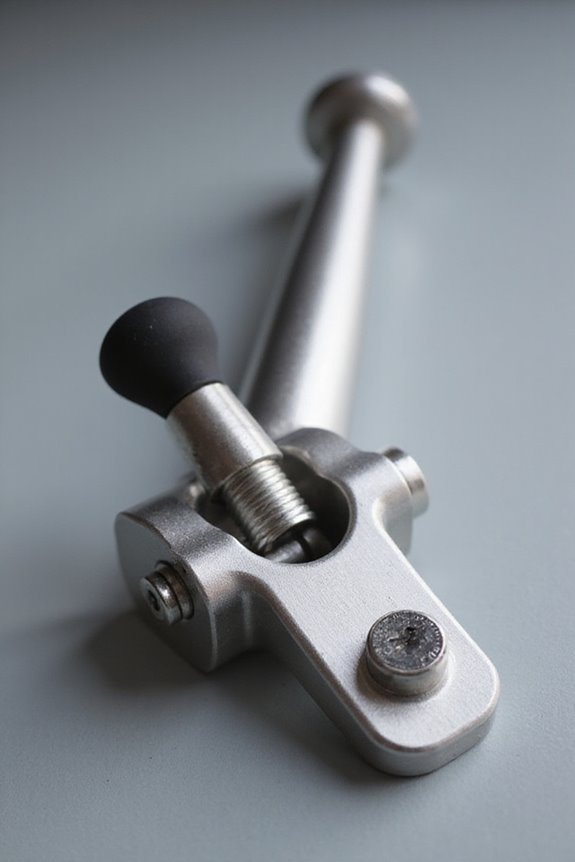
Picking the right winch handle length definitely affects how we handle those sails, but the materials and construction behind that handle play just as big a part in how it performs. Ever wondered why some handles feel solid but light? Carbon fiber, for example, blends high stiffness with minimal weight, giving us impressive material strengths and handle durability. Aluminum’s another favorite—extruded and anodized for corrosion resistance, it strikes a good balance between strength and weight. For lighter jobs, plastic composites float and resist UV, though they don’t last as long under heavy use. Stainless steel tips and ball bearings inside handles boost longevity, making certain our grip stays firm over time. Additionally, using marine-grade fluids can enhance the durability of gear systems on your boat. So, the secret’s out: choosing quality materials isn’t just smart—it guarantees the winch handle stands up to every twist and turn we throw its way.
Locking Mechanisms and Grip Styles Explained
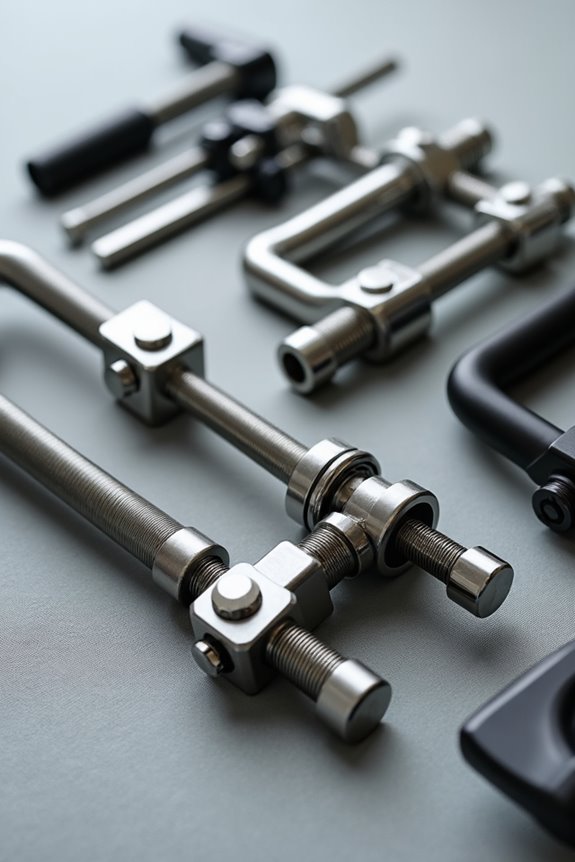
How exactly do winch handle locking mechanisms and grip styles affect our sailing experience? Well, locking mechanism benefits are huge—we’re talking about keeping our handles from flying overboard during a tough grind. OneTouch or quick-lock systems let us release and secure the handle with one hand, which is pretty handy when every second counts. And what about grip style preferences? Palm grips top the charts for comfort and power transfer, but roller handles and ball grips each have their perks, like reducing wrist strain or improving rotation. Some of us even prefer double handles for extra muscle power. The best part? Modern locking systems blend smooth locking with ergonomic grips, making grinding less of a chore and more of a team effort. After all, sailing’s better when our gear works as hard as we do!
Compatibility Across Winch Brands and Models
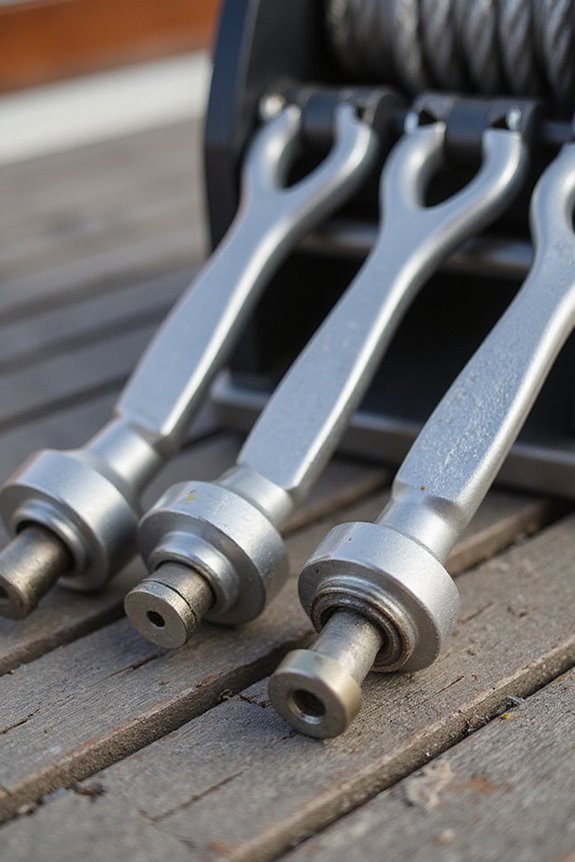
Since winch compatibility depends on a mix of factors—from mounting patterns and bolt sizes to vehicle-specific designs—we can’t just grab any winch off the shelf and expect it to fit perfectly. Winch mounting varies widely across brands and models, meaning cross brand compatibility isn’t always straightforward. For instance, some mounting patterns like the common 10 x 4.5-inch bolt layout help bridge gaps, but many vehicles need specific brackets tailored to their make and model. Ever tried fitting a square peg in a round hole? That’s what ignoring fitment charts feels like. Luckily, using compatibility guides and selecting winches with standard dimensions can save us from headaches. If we keep in mind bolt patterns, capacity, and vehicle design, we’ll find the right match that holds strong—no awkward adaptations required.
Integrating Winch Handles With Self-Tailing Systems
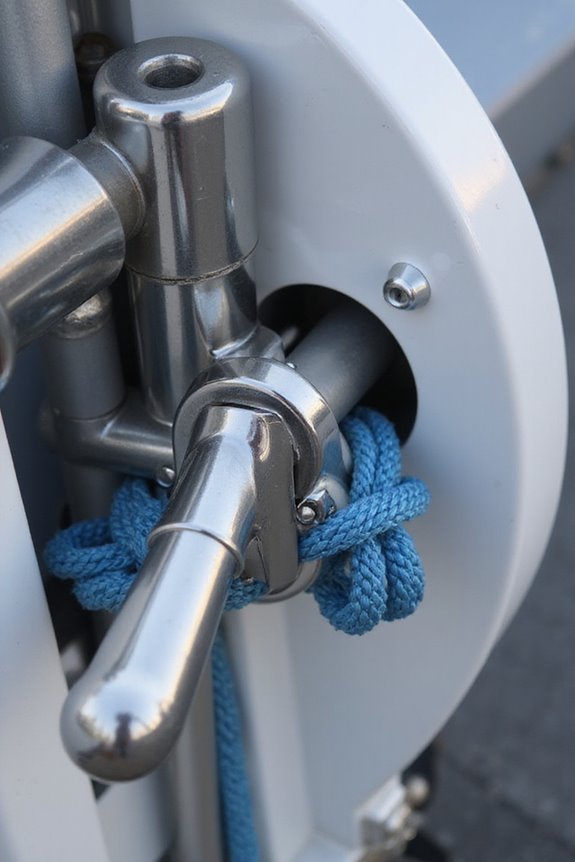
Although winch handles and self-tailing systems each have their own jobs on board, combining them creates a pretty clever setup that makes our lives easier out on the water. The self tailing advantages are clear: those jaws grip the rope hands-free, letting us focus on adjusting tension through the winch handle. Speaking of handles, winch handle ergonomics play a big role here—they’re designed for a secure fit and maximum leverage without getting in the self-tailer’s way. This combo lets us pre-load sheets, adjust tension quickly, and reduce strain, especially during those fast tacks or tight sail trims. It’s like giving your hands a well-deserved break while still keeping full control—now, who wouldn’t want that kind of smooth sailing?
Frequently Asked Questions
How Do I Maintain and Clean My Winch Handle Properly?
Let’s treat our winch handles like cherished old friends, giving them gentle winch handle cleaning with a tooth brush and marine grease. Together, we’ll master winch handle maintenance, keeping them smooth and ready for every adventure.
Can Winch Handles Be Customized for Left or Right-Hand Use?
We’ve found that winch handles often allow customization in ergonomics and materials—like switching grips or adjusting length—to fit left or right-hand use. This helps all of us enjoy better comfort and control together out on the water.
What Safety Tips Should I Follow When Using Winch Handles?
Like dancers in sync, we embrace winch handle safety by gripping firmly and respecting winch handle ergonomics, keeping body parts clear, wearing gloves, and never releasing the handle under load—so we all stay strong and connected.
Are Electric Winch Handles Allowed in Regulated Sailing Competitions?
We’ve found electric winch regulations vary widely; competitive sailing guidelines often prohibit them unless event SIs or class rules explicitly allow. So, let’s always check specific race rules to guarantee we’re compliant and fair on the water.
How Do Weather Conditions Affect Winch Handle Performance Over Time?
Like a sailor battling relentless waves, we face wind resistance and salt corrosion wearing down winch handles over time. Together, we must maintain and protect them, preserving their strength through every storm we weather as a crew.

